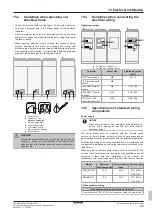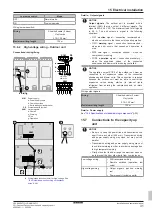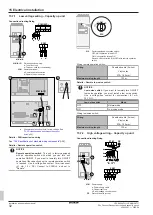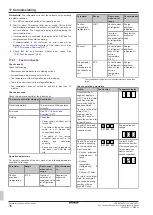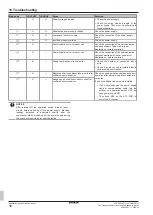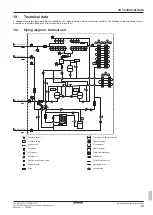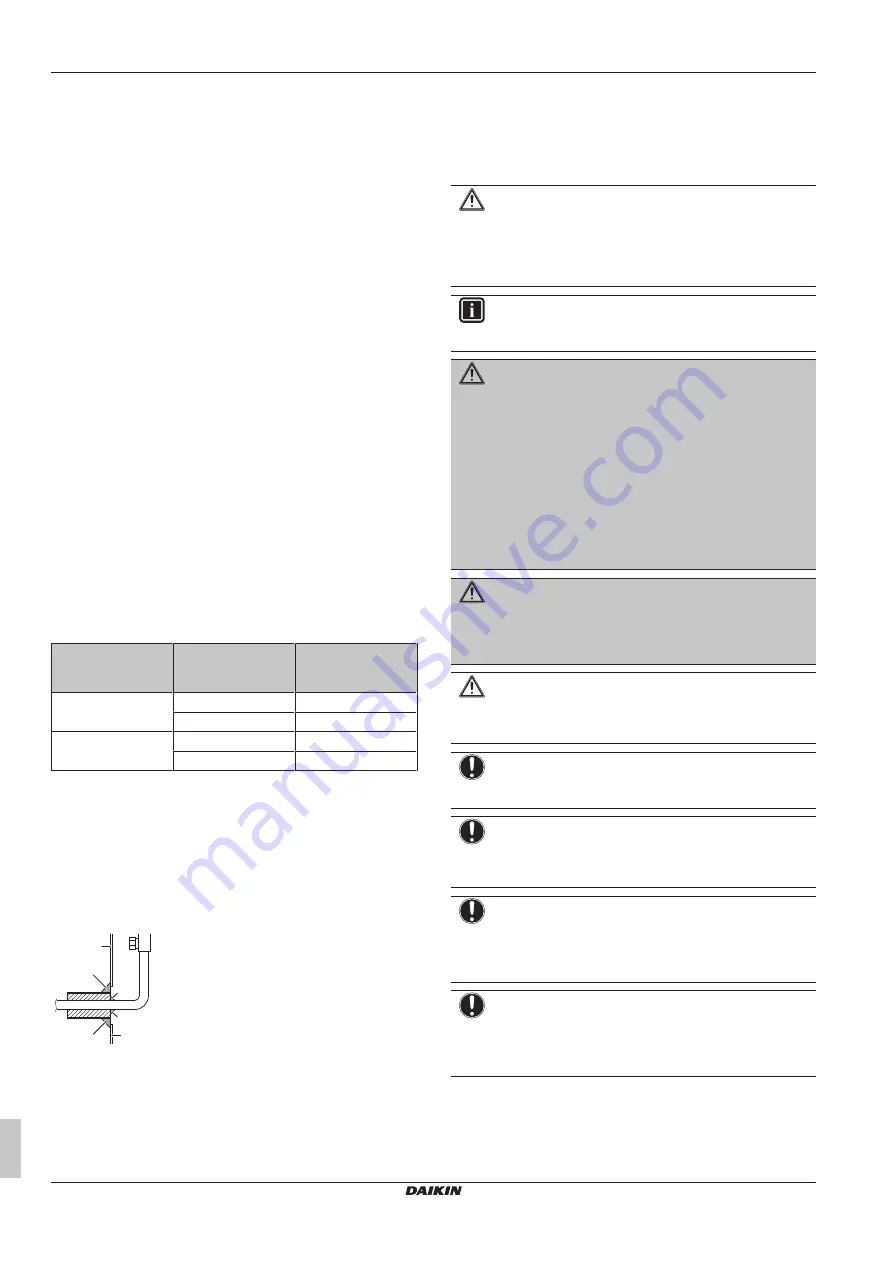
14 Charging refrigerant
Installation and operation manual
24
LRYELRNUN5A7Y1
CO
₂
Conveni-Pack outdoor unit and capacity up unit
4P605461-1 – 2020.04
In case of remaining moisture
When the unit is installed on rainy days, moisture may still remain in
the piping after a first vacuum drying is performed. If so, conduct the
following procedure:
1
Pressurize the nitrogen gas up to 0.05 MPa (for vacuum
destruction) and vacuum for at least 2 hours.
2
Afterwards, vacuum dry the unit to –0.1 MPa or less for at least
1 hour.
3
Repeat vacuum destruction and vacuum drying if the pressure
does not reach –0.1 MPa or less.
4
Leave the unit for more than 1 hour with a vacuum pressure of
–0.1 MPa or less. On the vacuum gauge, check if the pressure
does not increase.
13.5
Insulating the refrigerant piping
After finishing the leak test and vacuum drying, the piping must be
insulated. Take into account the following points:
▪ Make sure to insulate the connection piping and refrigerant piping
branching entirely.
▪ Be sure to insulate the liquid and gas piping (for all units).
▪ Use heat resistant polyethylene foam which can withstand a
temperature of 70°C for:
▪ all liquid piping at both the air conditioner and the refrigeration
side.
▪ gas piping at the refrigeration side.
▪ Use heat resistant polyethylene foam which can withstand a
temperature of 120°C for gas piping at the air conditioner side.
Insulation thickness
Take the following into account when determining the insulation
thickness:
Piping
Mode
Minimum
temperature during
operation
Liquid piping
Refrigeration
0°C
Air conditioner
20°C
Gas piping
Refrigeration
–20°C
Air conditioner
0°C
Depending on your local weather conditions, you may need to
increase the thickness of the insulation. If the ambient temperature
exceeds 30°C and the humidity exceeds 80%.
▪ Increase the thickness of the liquid piping with ≥5 mm.
▪ Increase the thickness of the gas piping with ≥20 mm.
Insulation sealing
To prevent rain and condensed water entering the unit, add a
sealing between the insulation and the front panel of the unit.
a
a
a
a
b
b
a
Sealing material
b
Front panel
14
Charging refrigerant
14.1
Precautions when charging
refrigerant
CAUTION
A vacuumed system will be under triple point. Therefore,
ALWAYS start charging with R744 in vapour state. When
the triple point is reached (5.2 bar absolute pressure or
4.2 bar gauge pressure), you may continue charging with
R744 in liquid state.
INFORMATION
For the operation method of the stop valves, refer to
"13.2 Using stop valves and service ports"
19].
WARNING
▪ Only use R744 (CO
2
) as refrigerant. Other substances
may cause explosions and accidents.
▪ When installing, charging refrigerant, maintaining or
performing service, ALWAYS use personal protective
equipment, such as safety shoes, safety gloves and
safety glasses.
▪ If the unit is installed indoors (for example, in a
machine room), ALWAYS use a portable CO
2
detector.
▪ If the front panel is open, ALWAYS beware of the
rotating fan. The fan will continue rotating for a while,
even after the power switch has been turned off.
WARNING
The unit is already filled with a certain amount of R744. Do
NOT open liquid and gas stop valves until all checks from
the
"17.2 Checklist before commissioning"
35] are
completed.
CAUTION
Do NOT charge liquid refrigerant directly from a gas line.
Liquid compression could cause compressor operation
failure.
NOTICE
If the power of some units is turned off, the charging
procedure cannot be finished properly.
NOTICE
Be sure to turn on the power 6 hours before operation in
order to have power running to the crankcase heater and
to protect the compressor.
NOTICE
Before starting charging procedures, check if the 7‑LEDs
display is as normal (see
34]). If a malfunction code is present, see
"18.1 Solving problems based on error codes"
NOTICE
Close the front panel before any refrigerant charge
operation is executed. Without the front panel attached the
unit cannot judge correctly whether it is operating properly
or not.
Summary of Contents for LRYEN10A7Y1
Page 43: ......




















